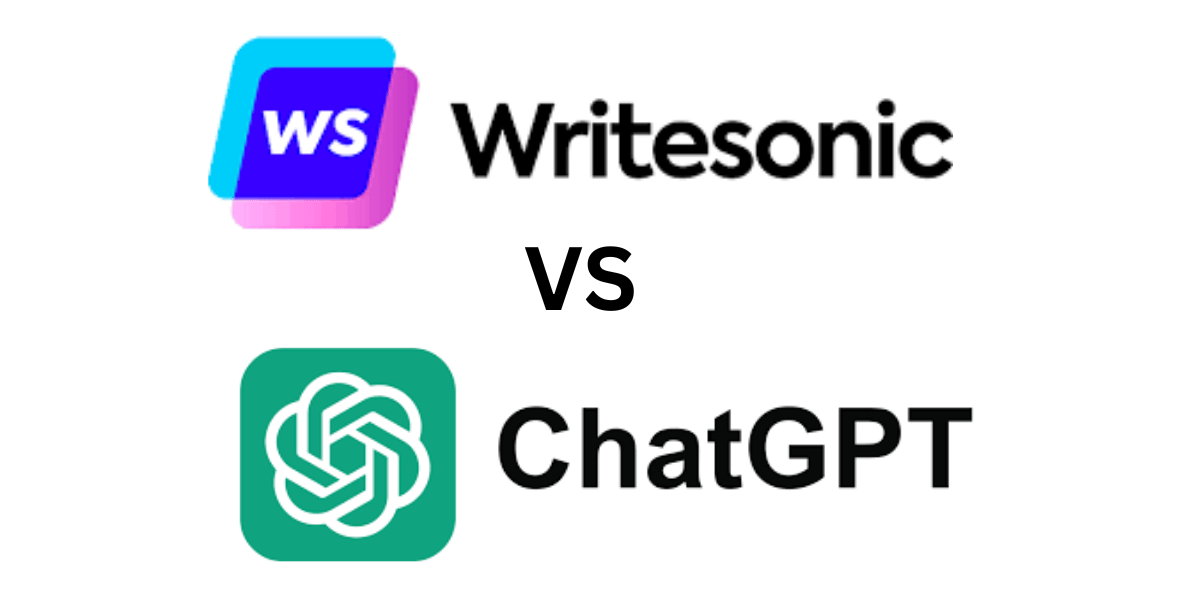In the fast-evolving world of AI-driven content generation, two names frequently pop up: Writesonic vs ChatGPT. Each platform has its unique strengths, but they serve different purposes depending on your needs—whether it’s for highly specialized SEO content or general conversational tasks. Let’s expand this comparison to ensure you have all the details before making your decision.
Writesonic: The Powerhouse for SEO-Driven Content
Writesonic goes beyond what traditional AI tools offer by focusing on marketing and SEO. Imagine you’re a marketer managing multiple affiliate sites, each needing a steady stream of optimized articles, product reviews, and social media content. The task is enormous, right? Here’s where Writesonic becomes a lifesaver.
Advanced Features for Marketers
First off, Writesonic’s templates make it easy to churn out content for a variety of purposes. These include:
- Product descriptions: Perfect for e-commerce sites that need hundreds or even thousands of product pages optimized for SEO.
- Landing pages: Writesonic can generate high-converting landing pages, complete with CTAs and well-structured formatting.
- Blog posts: Not only does it generate posts that sound natural, but it also integrates real-time SEO recommendations and keyword density checks.
This platform isn’t just about cranking out words. It’s about strategy—and this is where Writesonic shines. With its built-in SEO optimizer, you’re not just getting words on a page; you’re getting content that ranks.
Imagine this scenario: You’re launching a blog about sustainable fashion. After brainstorming keywords, you input them into Writesonic’s interface. Within minutes, you have a 1,500-word article, optimized with meta tags, headers, and internal links, and ready to be uploaded. It’s not just fast—it’s strategic, crafted with SEO ranking in mind.

Real-Time Web Search: ChatSonic to the Rescue
ChatSonic, a feature within Writesonic, takes things further by offering real-time web searches. ChatGPT, on the other hand, is limited by its knowledge cutoff unless integrated with plugins or specialized tools. If you need fresh, up-to-date content about breaking news or new products, ChatSonic ensures that your articles reflect current trends, pricing, or developments.
Visual Content and AI Image Generation
In today’s world, content isn’t just about words. It’s about visuals too. Writesonic can also generate AI-driven images, which helps marketers who need both written content and visuals for their websites or social media posts. While ChatGPT doesn’t dabble in visuals unless you use third-party integrations, Writesonic delivers a full suite of tools that helps you produce complete digital marketing packages.
ChatGPT: The Conversational Genius with Flexibility
While Writesonic is a workhorse for content creation and SEO, ChatGPT is the Swiss Army knife of conversational AI. Whether you’re brainstorming ideas, holding deep philosophical debates, or generating stories, ChatGPT is designed to feel like a conversation with a human.
Natural Language Processing at its Best
Where ChatGPT excels is in natural conversation. You can ask it almost anything—whether it’s to explain complex topics, give suggestions, or create well-rounded content. While it may not have a specific SEO focus, it’s an excellent choice for people who need content or conversational AI tools that don’t require meticulous optimization.
Here’s an example: If you’re a small business owner working on customer service automation, ChatGPT’s interactive capabilities make it ideal for chatbot applications. It understands context and nuance, making the customer experience more pleasant. Writesonic, though powerful, doesn’t come close to ChatGPT in handling conversational depth and interaction.
Creativity & Ideation
For creators and writers, ChatGPT offers an unmatched level of versatility. You can ask it to write anything from poems to technical documentation, blog posts, or even interactive stories. Need inspiration for your next novel? ChatGPT will help generate storylines, characters, and settings.
That said, it’s not perfect for long-term SEO strategy unless you’re willing to do the legwork yourself, adding proper headings, keyword densities, and internal links. ChatGPT gives you great raw material, but the refining process will be all on you.
Real-World Applications forWritesonic vs ChatGPT: Which Should You Choose?
- Writesonic is the clear winner for anyone in digital marketing, affiliate marketing, or e-commerce. If you’re managing websites and need automated content that ranks well in Google, Writesonic provides a turnkey solution. With its range of templates, real-time search, SEO insights, and image generation, you can build a website and fill it with optimized content in days, not weeks.
- ChatGPT is the best option if you’re looking for general-purpose conversational AI. Whether it’s for personal projects, interactive storytelling, or customer service chatbots, ChatGPT is much better at handling diverse tasks that require flexibility rather than strict optimization.
Here’s a direct comparison scenario: If you run an online store, Writesonic can create optimized product descriptions, blog posts, and landing pages. ChatGPT, on the other hand, can be used to create a customer service chatbot that handles frequently asked questions, improving customer satisfaction.
Pricing and Cost Efficiency
While both platforms offer free versions, let’s get into the cost-effectiveness of each.
- Writesonic starts at $12 per month, giving you access to its SEO tools and real-time web search features. The upper tiers let you scale your content creation even further, making it ideal for marketers managing multiple sites.
- ChatGPT offers a free version, which is great for personal use, but the paid ChatGPT Plus version ($20/month) gives you access to GPT-4, offering more refined and accurate content generation. However, it doesn’t come with SEO features or automated publishing tools, so you’ll need to do extra work manually.
For large-scale marketers or business owners, the investment in Writesonic’s content automation features will pay for itself by significantly reducing the hours you spend on SEO optimization. ChatGPT is more affordable for casual users or those looking for flexible, multi-purpose AI.
User Reviews and Feedback
Let’s not just rely on theory—here’s what users are saying about both platforms:
- Writesonic users rave about how easy it is to create SEO-optimized content that performs well. Laurie M., a content marketer, mentions that she reduced her blog-writing time by over 50% since using Writesonic’s automated templates.
- ChatGPT users are impressed with how natural and intuitive the AI feels in conversation. Jeff K., a freelancer, uses it daily to brainstorm content ideas and client proposals, loving its ability to handle creative projects.

The Final Verdict for Writesonic vs ChatGPT: Which One Wins?
So, which one should you choose in the Writesonic vs ChatGPT showdown? Here’s the deal:
- Writesonic wins hands down if your goal is to create SEO-optimized content quickly, efficiently, and with minimal manual work. The added benefit of real-time search and image generation makes it perfect for marketers, e-commerce entrepreneurs, and content creators focused on scaling their output.
- ChatGPT is unbeatable when it comes to conversational AI and creative flexibility. If your focus is more on creativity, customer interaction, or flexible writing tasks, ChatGPT is your go-to.
Ultimately, both tools are excellent, but they cater to very different needs. Know your objectives, and the choice becomes clear.



